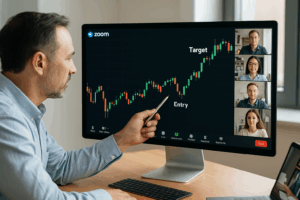Main Indexes Accomplish Precisely Nothing – Barely Escape Opening Ranges
 Ahoy there, Trader! ⚓️
Ahoy there, Trader! ⚓️
It’s Phil…
Tuesdays delivered a masterclass in doing absolutely bugger all.
Main indexes successfully managed SFA – “Sweet Fanny Adams” – barely moving out of the 20-minute and 60-minute opening ranges, only just peeking past previous day’s highs like timid toddlers testing bath water temperature.
Very little has changed from yesterday’s expectations. I remain overall bearish with anticipated movement from upper range to lower range. Crash/Correction season is nearly over now, so I’ll stop banging that particular drum.
SPX remains bearish as I placed my trade and left it alone for the day. The software did trip back to bullish briefly – classic flip-flop behaviour. If we open at or lower today, it’ll flip back to bearish. I need to think of a better way of handling these rare occasions where prices flip around a setup like this.
Manually? It’s relatively simple:
Place your trade and come back tomorrow.
Standard practice. One trade decision per day.
Keep scrolling for the theta gobbling action…
Manual trade management beats algorithmic indecision through patient positioning.
Keep reading for trade anatomy.
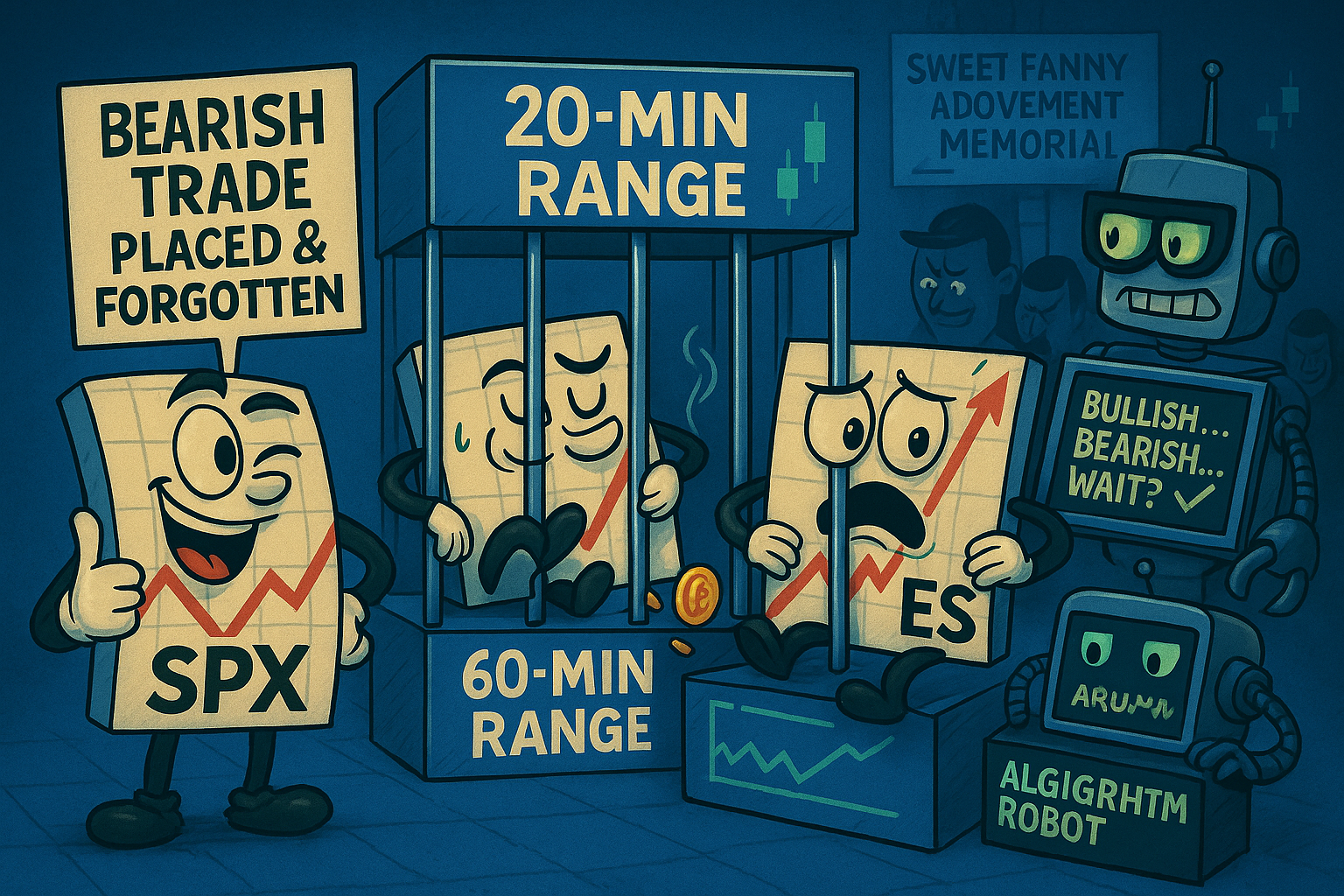
SPX Market Briefing:
Wednesday arrives with markets having accomplished precisely nothing on Monday whilst everyone waited for something – anything – to happen.
Current Multi-Market Status:
- SPX TnT: Bearish (software flipped to bullish temporarily, will revert if open lower – manual trade holding bearish)
- RUT TnT: Bullish (collecting theta nicely, not at BB extremes)
- ES/YM/RTY/NQ: Daily Range-bound consolidation (waiting for breakout direction)
The Sweet Fanny Adams Movement
Tuesday’s price action delivered a masterclass in accomplishing absolutely nothing. Main indexes stayed glued inside their opening ranges like teenagers refusing to leave their bedrooms. Twenty-minute range? Nope. Sixty-minute range? Also nope. Previous day’s highs? Barely a peek.
This is the market equivalent of showing up to work, sitting at your desk, staring at your screen for eight hours, and leaving having accomplished precisely nothing except consuming coffee and oxygen.
Current Status: Range-bound, indecisive, waiting for permission slip
SPX Software vs Manual Trade Discipline
Here’s where things get interesting. I placed my bearish SPX trade and walked away.
Standard practice.
One trade decision per day.
No babysitting.
No second-guessing.
No emotional interference.
The software, however, had other ideas. Briefly flipped to bullish like a confused teenager changing their mind about university courses. Classic algorithmic flip-flop behaviour when prices hover around setup triggers.
Manual Approach Response: Nothing. Absolutely nothing.
Trade placed.
Decision made.
Come back tomorrow.
If we open at or lower today, software flips back to bearish, the manual approach of “one decision per day” prevents the whipsaw nonsense of chasing every minor fluctuation.
Current Status: Bearish trade holding, software temporarily confused, discipline maintained
RUT – The Professional Theta Collector
Uncle Russell continues behaving like the grown-up in the room. Bullish positioning, not at upper or lower Bollinger Band extremes, just sitting there collecting theta like a systematic rent cheque.
No drama. No flip-flopping. No indecision. Just premium decay working exactly as designed.
This is what boring, profitable trading looks like. Not exciting. Not thrilling. Just mechanically effective.
Current Status: Bullish, theta collecting, professionally unbothered
Crash Season Nearly Finished
Right, I’m officially retiring the “Crash/Correction Season” drum. October’s nearly over. We’ve made it through September and most of October without the dramatic collapse everyone keeps predicting. (Neither did we see Uptober!)
Yes, we’ve had some volatility. Yes, markets have been choppy. But the apocalyptic crash scenario? Not materialising.
Time to stop banging that particular drum and focus on what’s actually happening rather than what might happen based on seasonal patterns.
Current Status: Crash season ending, drum retired, moving on
Breakout Traders Sharpen Their Knives
Today feels like it could be fun for breakout traders. Markets consolidated on Monday doing absolutely nothing. Energy’s building. Ranges are tightening. Something’s got to give.
Either we breakout higher and the bulls get their parade, or we breakdown lower and bears get their feast. Range-bound traders are collecting theta. Breakout traders are waiting with sharpened knives.
Poppers are locked and loaded, waiting for the opening bell.
Current Status: Consolidation energy building, breakout imminent, poppers ready
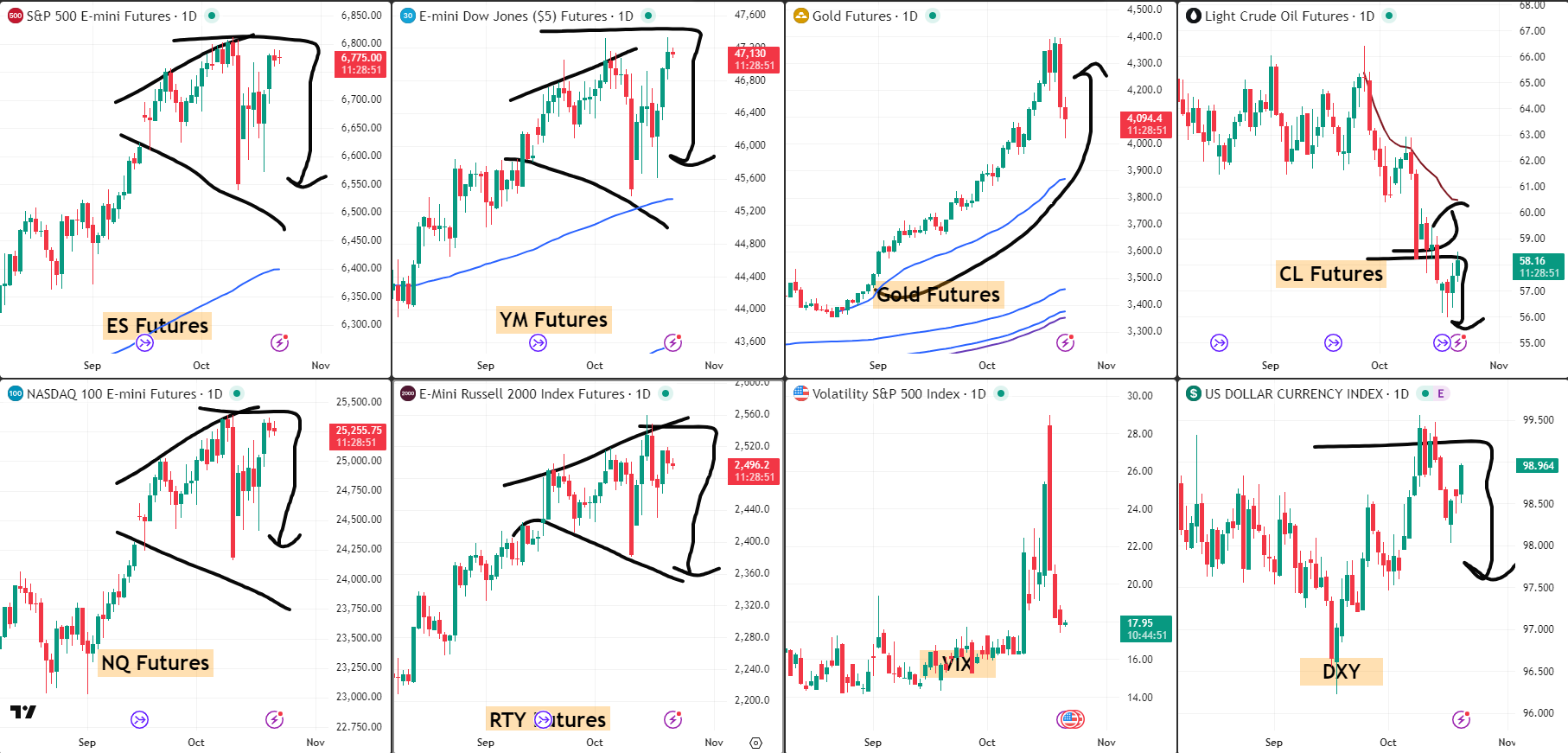
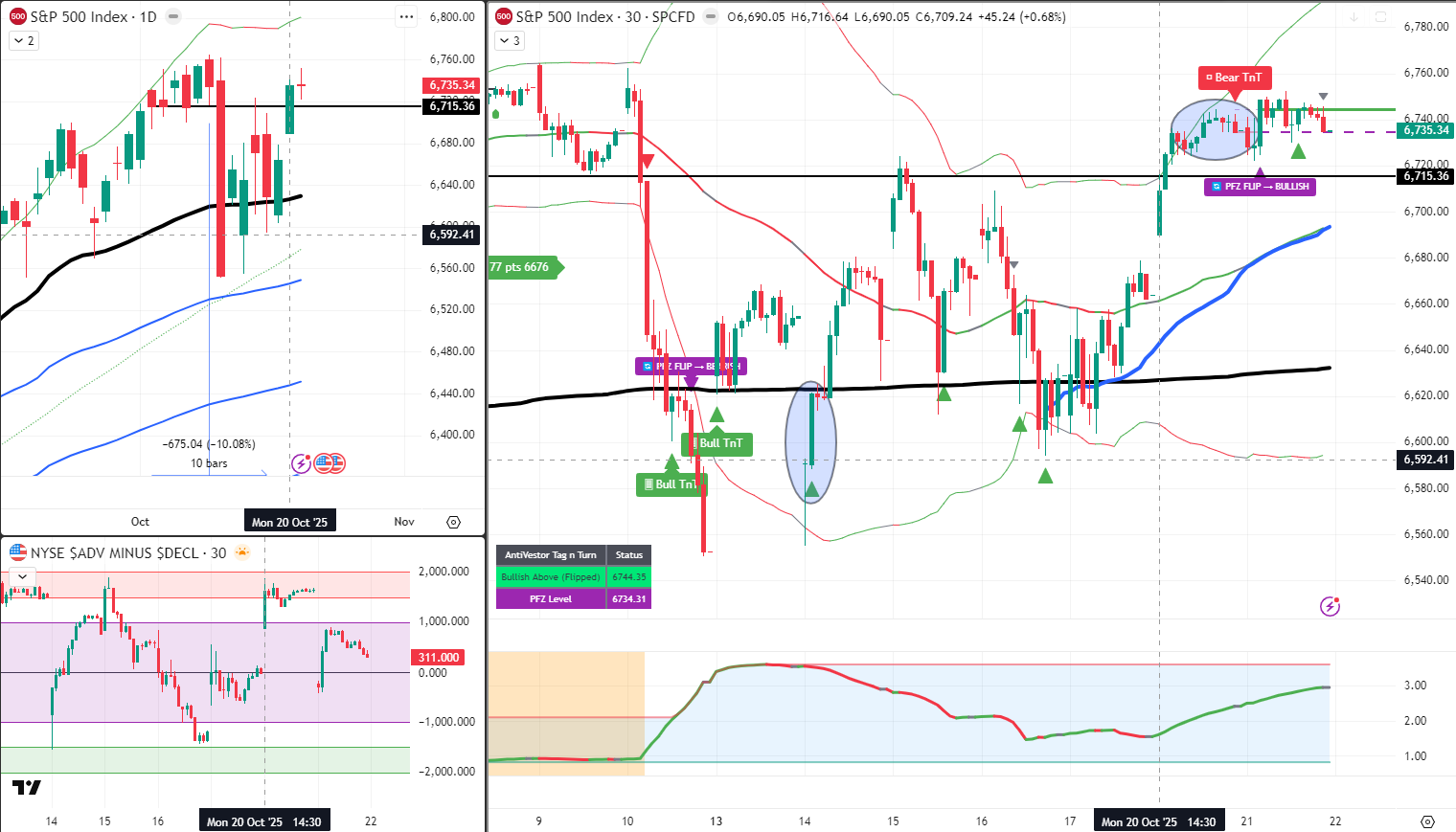
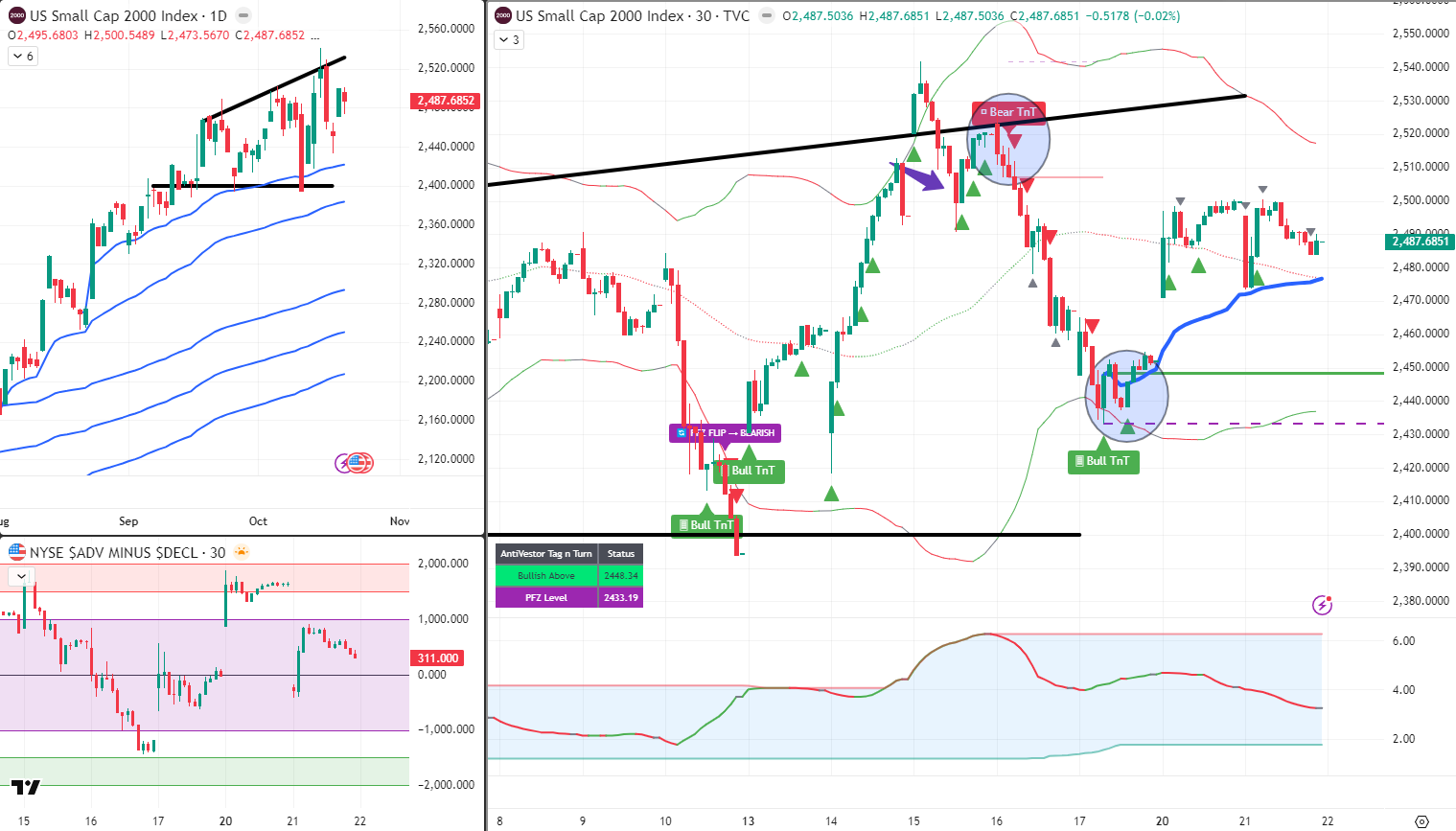
In Other News…
Dow Hits Record While Tech Throws a Moody — The Great Earnings Split
Wall Street’s acting like a dysfunctional family at Christmas dinner — the Dow’s celebrating, the S&P’s sulking, and tech’s staring into the gravy, questioning its worth.
At 09:25 ET, S&P futures +0.1% to 6,742, Nasdaq +0.2% to 16,850, everyone pretending that calm futures mean calm feelings.
Tuesday’s Dow closed a record 46,925, up 218 points, while S&P finished flat at 6,735 and Nasdaq fell 0.16% to 22,954, because not even AI can make earnings season fun.
The VIX ticked up to 18.59 from 16.8, signalling a touch of unease — the market equivalent of Mac pouring whisky into his morning coffee “just in case.”
️ Old Economy Strikes Back — Coke, 3M, GM Steal the Spotlight
Apparently, the future’s overrated.
Investors rediscovered the joy of companies that actually make things.
Coca-Cola +4.1%, 3M +7.7%, GM +14.9%, all rallying on actual earnings and tangible guidance — the financial equivalent of “showing up to work and doing your job.”
Meanwhile, tech lagged like Wallie during quarterly reviews.
The rotation back to old economy names proves one thing: when investors say “we want value,” they really mean “we’ve had enough of vibes-based market caps.”
Earnings: Heroes, Villains, and Cautionary Tales
GM’s 14.9% rocket came after it raised full-year outlook and said tariffs aren’t that scary after all — down to a 35% impact from prior estimates.
Apparently, Detroit can handle trade wars better than Twitter threads.
Netflix, however, bombed its after-close performance with $5.87 EPS vs $6.97 expected, blaming Brazilian tax adjustments (because there’s always Brazil).
Revenue up 17%, ad sales record-breaking, but Wall Street only heard “miss.”
Tonight’s double feature:
-
Tesla (EPS $0.55 est), down 24% YoY — margin anxiety meets Elon’s chaos energy.
-
IBM (EPS $2.45 est) — the market’s “legacy tech uncle,” trying to prove it’s still got game.
Cross-Asset Vibes — Steep Curves and Calm Panic
The Treasury curve steepened again: 2-year 3.449%, 10-year 3.955%, market signalling relaxed faith in Powell’s rate-cut yoga routine.
The Dollar +0.34%, flexing just enough to annoy emerging markets.
Gold corrected 7.2% to $4,063 — traders declaring the bubble temporarily “popped but polite.”
Crude $58.13, up 1.56%, still struggling to look confident near $60.
Options desks show heavy QQQ put buying ahead of mega-cap earnings — institutional translation:
“Everything’s fine, but we bought insurance anyway.”
☕ Hazel’s Final Thought
The Dow’s partying, tech’s pouting, and Tesla’s about to step into the confessional.
Markets love “rotation” until it means admitting they overpaid for dreams.
The message from Wall Street’s split personality?
In a world full of AI promises, sometimes all it takes to win is selling actual fizzy sugar water.
— Hazel Ledger,
FinNuts Bureau of Tangible Profits and Emotional Volatility
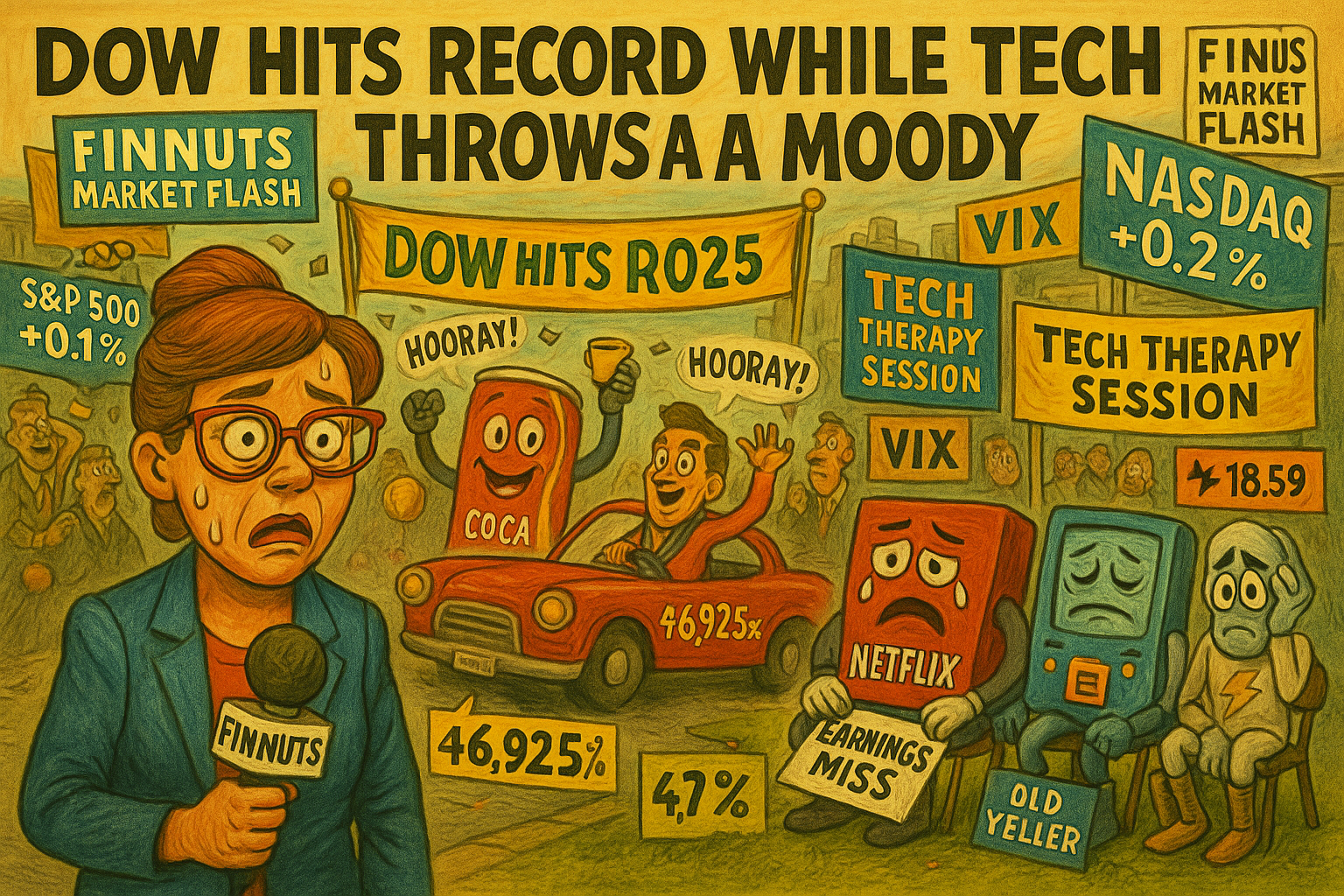
Expert Insights:
One Trade Decision Per Day Philosophy
The software flip-flop situation highlights something important about manual trade management versus algorithmic responses.
Algorithms react to every price fluctuation. They’ll flip bullish, then bearish, then bullish again if prices hover around trigger levels. It’s mathematically correct but practically exhausting.
Manual approach? Make one decision. Place the trade. Walk away. Come back tomorrow.
No second-guessing. No emotional interference. No chasing every minor fluctuation. Just systematic discipline applied once per day.
Sometimes the best trading decision is trusting your initial analysis and refusing to be distracted by algorithmic noise.
Rumour Has It…
Breaking from the Financial Nuts newsroom: Percy was discovered teaching his desk pigeons “Sweet Fanny Adams Formation Flying” whilst claiming they had mastered “Systematic Nothing Accomplishment During Range-Bound Consolidation Advanced Cooing.”
Hazel updated her crisis management protocols to include “Software Flip-Flop Response Procedures” alongside emergency plans for “One Trade Decision Per Day Discipline Maintenance During Algorithmic Confusion Processes.”
Mac raised his Tuesday morning whisky and declared, “When markets do absolutely bugger all whilst software flips about like confused teenagers, manual trade discipline becomes delightfully superior!”
Kash attempted livestreaming about “theta collection being basically like passive DeFi protocol yield farming but with actual Bollinger Band positioning” but got distracted watching breakout traders sharpen their knives.
Wallie grumbled that in his day, markets moved “with proper conviction rather than this modern Sweet Fanny Adams nonsense with algorithmic flip-flopping confusion!”
This is entirely made-up satire. Probably!
Breaking scoops courtesy of the Financial Nuts Newswire-because who needs sanity?
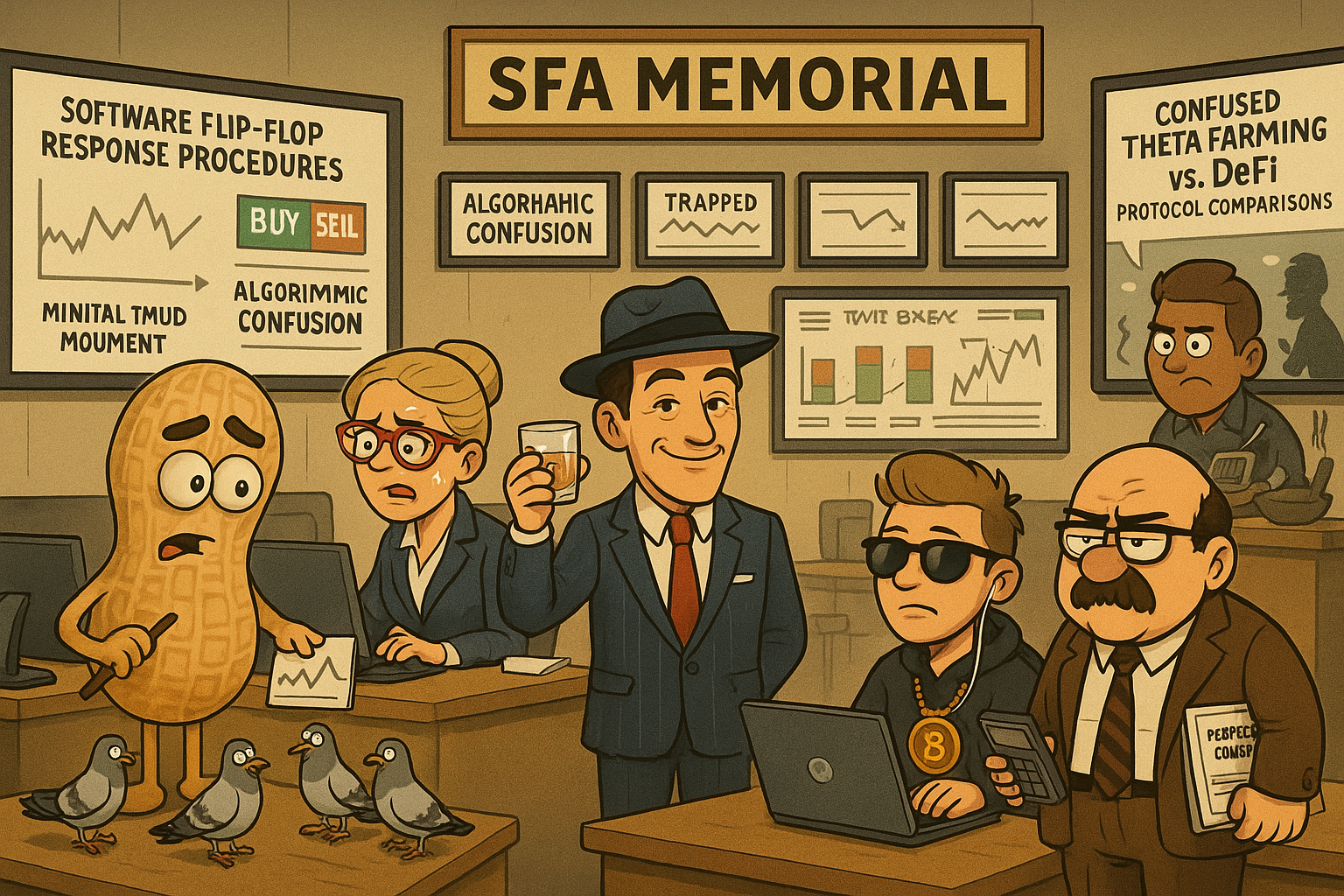
Fun Fact:
Window Dressing: Wall Street’s Quarterly Fashion Show
At the end of each quarter, fund managers engage in “window dressing”—selling losers and buying winners to make their portfolios look prettier for investors!
Window dressing is Wall Street’s quarterly equivalent of cleaning your room right before your parents visit—frantically shoving all the embarrassing stuff under the bed and putting the good things on display!
Institutional investors tend to clean up their portfolios in September and October before the fiscal year ends by selling their worst-performing stocks and sometimes adding exposure to stocks that have performed better, a process known as “window dressing”.
Fund managers spend the last few days of each quarter desperately trying to make their portfolios look like they knew what they were doing all along. They dump the stocks that have been dragging down performance faster than teenagers hide their browser history, while loading up on the recent winners to create the illusion of investment genius.
The end-of-quarter effect shows a pattern of high volatility during the last few trading days of an annual quarter, as large funds rebalance portfolios or “pump” positions to boost quarterly performance.
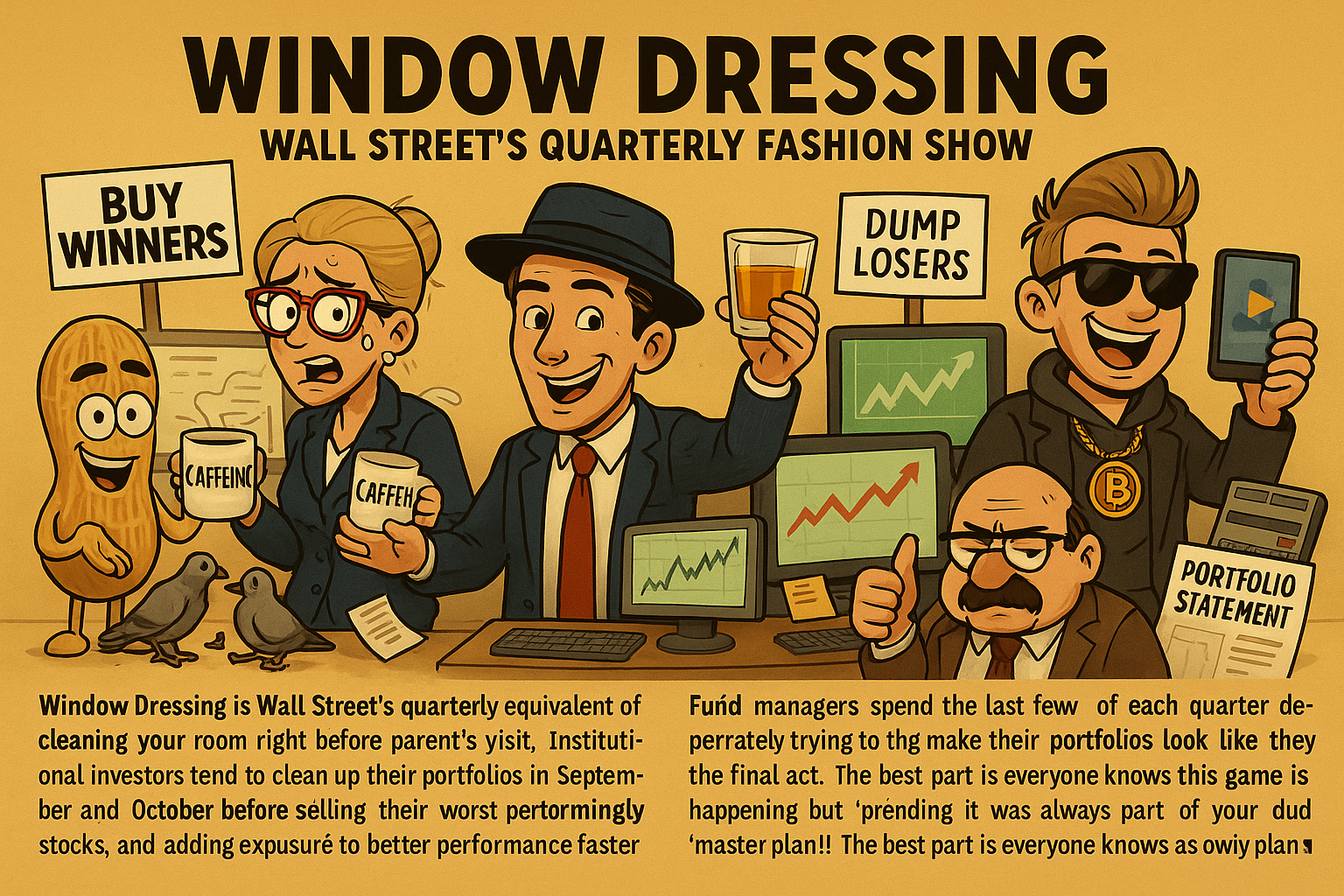
Happy trading,
Phil
Less Brain, More Gain
…and may your trades be smoother than a cashmere codpiece
p.s. There are 3 ways I can help you…
- Option 1: The SPX Income System Book (Just $12)
A complete guide to the system.
Written to be clear, concise, and immediately actionable.
>> Get the Book Here
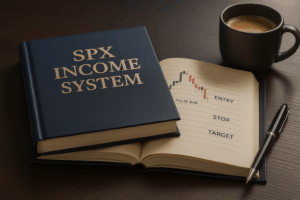
- Option 2: Full Course + Software Access – 50% off for Regular Readers – Save $998.50
Includes the video walkthroughs, tools for TradeStation & TradingView, and everything I use daily. Plus 7 additional strategies
>> Get DIY Training & Software

- Option 3: Join the Fast Forward Mentorship – 50% off for Regular Readers – Save $3,000
>> Join the Fast Forward Mentorship – trade live, twice a week, with me and the crew. PLUS Monthly on-demand 1-2-1’s
No fluff. Just profits, pulse bars, and patterns that actually work.
